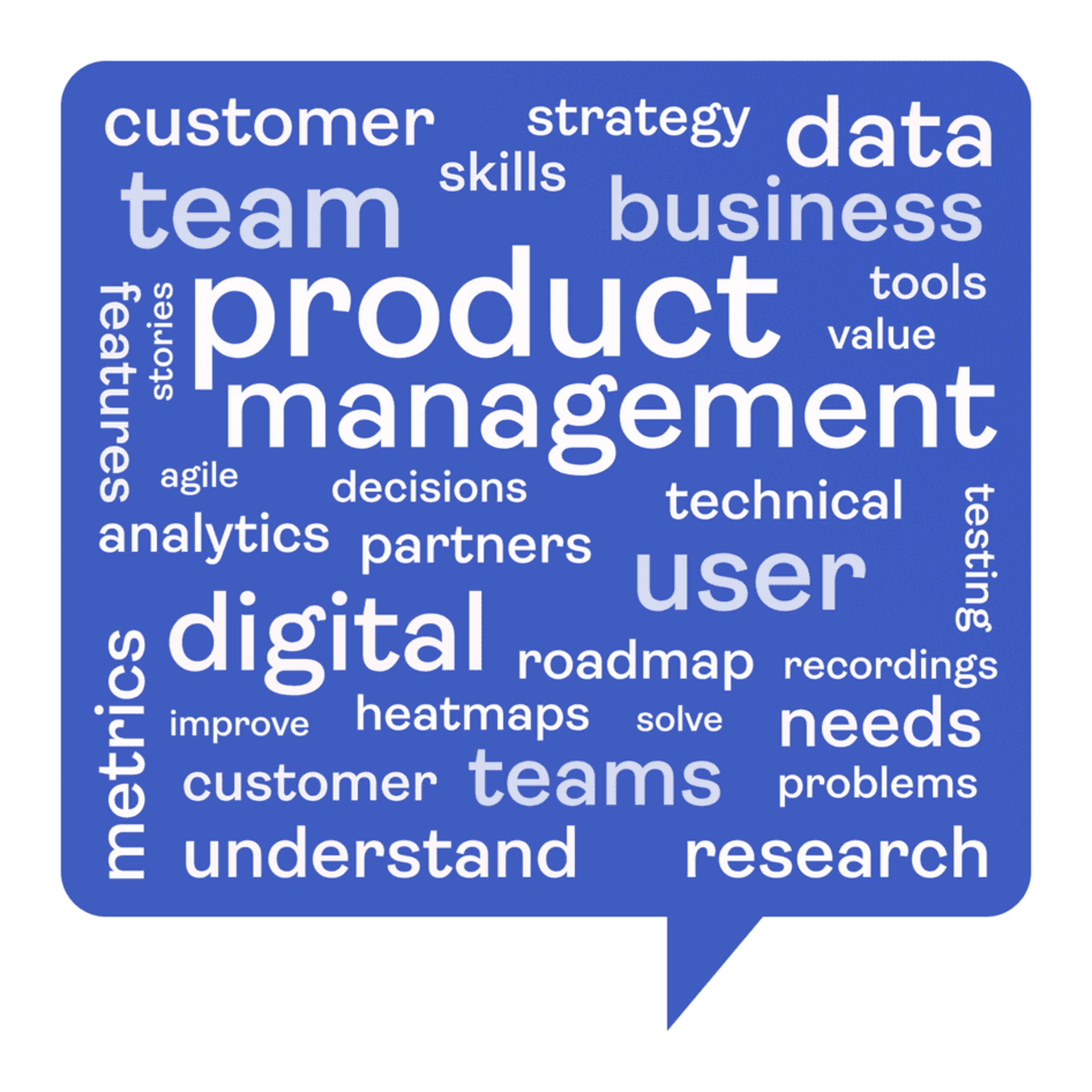'Product marketing' and 'product management' sound really similar. Product managers and product marketers even share the same initials and exist at the same companies, which makes it all the more confusing to describe what you do at family gatherings.
And yet, they’re different jobs with their own set of responsibilities and priorities.
If you’re trying to define roles in your growing company, want to increase cross-team collaboration, or need to explain your job to your family once and for all, look no further. This guide covers the differences between product managers and product marketers, how they work together, and where they find common ground.
Summary
Some key differences between product managers vs product marketers include their focus on different aspects of the product strategy and lifecycle. Product managers are responsible for developing the product features and overall direction, while product marketers handle positioning, messaging, and promotion to ensure product success in the market.
Product managers and product marketers work together by using user and customer data to reach their respective goals. They both use qualitative and quantitative data to ultimately increase user experience and drive customer success.
Companies need both product marketers and product managers because they provide complementary expertise that ensures things like messaging, pricing, and feature/product development are all aligned. With both teams working in tandem, you’ll create a successful product that your customers will love.
Key differences between product marketers and product managers
Product marketing and product management are two roles you’ll find mainly in software-as-a-service (SaaS) and ecommerce companies. However, any company could define something as a ‘product’ and assign a team to manage or market it.
For example, a SaaS company's product would be a software solution; ecommerce may have different item categories, such as clothes or notebooks; and a news website would consider ‘content’ as its product.
But no matter the business type, the people assigned to product marketing and management have different responsibilities and strategies.
Let’s get into the details of each:
Product marketer vs product manager roles and responsibilities
Product marketing handles the positioning and promotion of a product, while product management strategically directs the product’s development at every stage of its lifecycle.
However, neither function creates the product—that’s the job of product engineers and designers. Instead, product marketers and managers support the direction and growth of the product.
Product marketers strive to understand customers and their needs to decide the product’s messaging and promote it.

The words and phrases most often associated with product marketing job descriptions include strategy, positioning, messaging, go-to-market, and communications.
Product marketers use customer and product experience (PX) insights to understand what drives customers to try their product and which marketing channels to use to promote it.
For example, imagine you’re a product marketer in charge of promoting and increasing sales for a coat. You'd make a data-driven decision about whether your audience will respond more to technical specifications like temperature ratings or the fact that a celebrity wore it on a luxury ski trip.
Product marketing responsibilities include
Conducting user research to understand customer pain points and goals
Creating promotional and educational content, so customers immediately understand product benefits and use cases
Planning product launch strategies and marketing campaigns
Finding the unique selling proposition that sets their product apart from competitors
Educating the sales team on product positioning
On the other hand, product managers take in information and perspectives from executives and stakeholders to create a plan to deliver solutions. Product management focuses on the entire product lifecycle—from research and development to testing and positioning—to build technically feasible products that fulfill user needs and business objectives.

Words like customer, strategy, research, and metrics show up often in product manager job listings.
Product managers balance company-wide goals, developer resources, and customer needs to decide what product or feature to create next.
If you worked at the same coat company, your job as a product manager would be to decide whether improving the zippers or coat lining is the most profitable next step.
Product management responsibilities include
Creating a product roadmap to explain how the product will develop over time
Defining the product vision and getting stakeholder buy-in for it
Encouraging alignment within the team on the ‘why’ behind the vision
Understanding and advocating for user needs
Product prioritization and managing backlog
Product marketer vs product manager skill and strategies
Product marketers and product managers ensure their companies make informed decisions, like how they should talk about their product to potential customers and which product idea or new feature will delight users.
Product marketers focus on research to deeply understand customers to match their needs to the product.
For example, a product marketing team assigned to enterprise clients for a payroll management app would survey users about pain points and develop messaging and campaigns that present their product as a solution.
Product marketers would then use their market research to decide if they should promote that a new payroll integration saves time or reduces the potential for human error. Without a product marketer, your business would spend time and resources developing a product that helps customers achieve their jobs to be done (JTBD) but fails to convince them to try it.
Product managers, on the other hand, develop a product roadmap that guides how the organization will update the product over time.
For example, a product management team for the calendar feature of the same payroll app we mentioned above would watch session replays to find frustrating designs, survey customers, collaborate with devs to update the product, and share insights with leadership.
Let’s look into the specific skill sets each role needs.
Essential product marketer skills
Empathizing with customers: stay curious about customers and use tools like Session Replays and Zone-Based Heatmaps to put yourself in their shoes
Cross-functional team collaboration: share what you learn. Other teams benefit from your customer insights, and you need to understand cross-functional goals.
Strategic thinking: mix creativity and practicality to prioritize your work and create impactful campaigns
💡 Seeing your users is understanding your users
Contentsquare (hi there, that's us👋) shows you exactly what customers love and hate with Session Replays—playbacks of users scrolling, moving, u-turning, and rage-clicking on your site. They let you see exactly how customers interact with your product, so you can find and fix issues quickly and find new ideas and opportunities.
![[Visual] Session replay with errors](http://images.ctfassets.net/gwbpo1m641r7/5300UGuNVMgYUxTF9sgkSo/300e57a1f5ee5799db8391af046f723e/Session_replay_with_errors__1_.png?w=1920&q=100&fit=fill&fm=avif)
Contentsquare's replay tool gives you quantifiable experience insights you can share with your team and use to make decisions.
Essential product management skills
Customer research: leverage user research tactics, like interviews and replays of how customers use your product, to uncover insights
Creating actionable strategies: balance customer and PX insights with company goals to come up with new product ideas and features
Prioritizing product updates: product managers often have a larger product backlog than they can complete at once, so they have to prioritize what to work on next
How product marketers and product managers work together
Product marketing and product management share one critical focus—customers. Your customers are the common ground between product marketing and product management, so truly understanding them is the link between the two roles.
3 similarities between product marketers and product managers
First, both specialties need a deep understanding of customer pain points, goals, and preferences to deliver a product and message that stick with users.
Product marketers need customer insights to shape the product’s positioning, like using a survey that asks, ‘Why did you start using our product?’ to identify a user’s catalyst for action. For example, if a product manager in charge of a company’s blog learns that customers start visiting when they land a new job, they inform the marketer, who then creates a content tag and landing page for career insights.
Similarly, product managers need user and product experience insights that reveal how customers engage with the product to make informed roadmap decisions. For example, a website's product manager would analyze session replays to monitor rage clicks that signal a particularly frustrating user interface (UI) design they need to rework immediately.
🤔 When in doubt—ask!
If you need to decide on it, you can survey it. Product managers and marketers use multiple-choice and open-ended question surveys to uncover quantitative and qualitative data and make changes and decisions that impact conversions.
Second, both specialties act as customer advocates in their roles.
Product marketing advocates for customers by empathizing and offering help where they need it, like creating helpful content based on pain points or questions they have. Product managers advocate for customers by prioritizing features based on feedback and product experience insights, like finding a product fix that delights customers.
Third, both specialties need to consider a mix of qualitative and quantitative data and viewpoints to understand the big picture of customer experience.
For example, product marketers will launch a product-market fit survey to quantify how often customers use the product to understand how it fits into their workflows. The survey can also have an open-ended question asking what sets your product apart from the competition, which is useful for positioning.
Product managers also use multiple data points to make decisions. For example, product managers use traditional website analytics to find pages with a high cart abandonment rate. Then, they review session replays to see why customers are abandoning their carts—like a confusing call-to-action button—and fix the issue quickly instead of playing ‘guess and check.’
See it in action: how product marketing and product management work together
Product marketers and product managers share high-level goals, even if the way they contribute varies.
Product marketing and management work together to attract more customers. For example, imagine your coat company has an ambitious customer growth goal and wants to increase website conversions for an under-performing item. Here are the steps you’d follow:
The marketing team researches their top-performing content and campaigns to understand what messaging and features increase sales, and for which customer personas
The product management team combines those insights with product experience metrics to decide how to re-work the item
Once the new product is live, product managers share session replays so marketing can see how customers explore the product page firsthand
The product marketers then combine their persona research with insights from replays to position the improved product
Heatmap data reveals how the marketing team needs to adjust messaging and how the product team needs to rearrange the design
Let’s look at another example. Imagine you’re at a payroll app company trying to increase customer retention. Product marketers and managers would work together with the following process:
The product management team filters replays to watch how the most-engaged customers use a feature
Product managers also deploy on-site surveys that ask what other tasks customers want to complete
Insights from replays and surveys help product managers prioritize their product backlog
Meanwhile, the product marketing team uses replays and surveys to learn about their ideal customer
Product marketing adjusts which customer persona to target and how—for example, promoting to accountants instead of HR staff—so each new customer adopts the product and becomes a long-term user
3 reasons companies need product marketers and product managers
If product marketers and managers use customer data and product experience insights to make decisions, can you combine the roles?
Not really. They each serve unique functions.
What about using one function or the other?
Still no—they’re better together. Here’s why:
When you have both product marketers and managers, your organization spends marketing and development resources on relevant pain points. You also end up with a product that focuses on features customers really need and correctly positions them—having only one benefit or the other limits your company’s potential.
Empowering both teams to do their best work and collaborate creates a consistent customer experience. When everyone works with the same insights and customer-centricity, each decision supports the next. For example, it would be confusing if product marketing mostly talked about an integration feature that the product team plans to sunset. The story customers hear from marketing materials needs to align with the product, or they’ll churn.
Finally, you learn twice as much about customers if you have both product marketers and managers. When product management and marketing teams conduct customer research and share what they learn across teams, everyone benefits from more insights.
PX insights: the driving force behind product marketing and management
Product marketing and product management teams stay close to customers to understand and build products that meet their needs—and data is the only way to do that.
Rather than relying on hunches and assumptions about what customers need and want, customer and PX insights give you facts that lead to relevant decisions. For example, product marketers and managers use these insights to measure a problem's significance and decide how best to resolve it.
FAQs about product marketers vs product managers
What does a product marketer do?
Product marketers use customer and product experience insights to tell their audience why they should try a product or feature—and determine what channels and campaigns to use to tell them.
For example, suppose you’re in charge of marketing a coat. In that case, you’ll make a data-driven decision about whether your target audience will respond more to technical specifications, like temperature ratings, or the fact that a celebrity just wore it on a luxury ski trip.
Product marketers conduct user research to understand pain points and goals, plan marketing campaigns, and find competitive differentiators.
What does a product manager do?
Product managers find a way to balance company-wide goals, developer resources, and customer needs to decide what product or features to create next.
If you worked at the same coat company as the product marketer example does, your job as a product manager would be to decide whether improving the zippers or coat lining is the most profitable next step.
Product managers define the product vision, understand and advocate for user needs, and prioritize the product backlog.
Product marketing vs. product management: are there similarities?
Product marketing and managing roles share three main similarities:
Both need a deep understanding of customer pain points, goals, and preferences to deliver a product and message that resonates
Both specialties act as customer advocates
Both specialties use a mix of quantitative and qualitative data and viewpoints to get a complete picture of the customer experience
